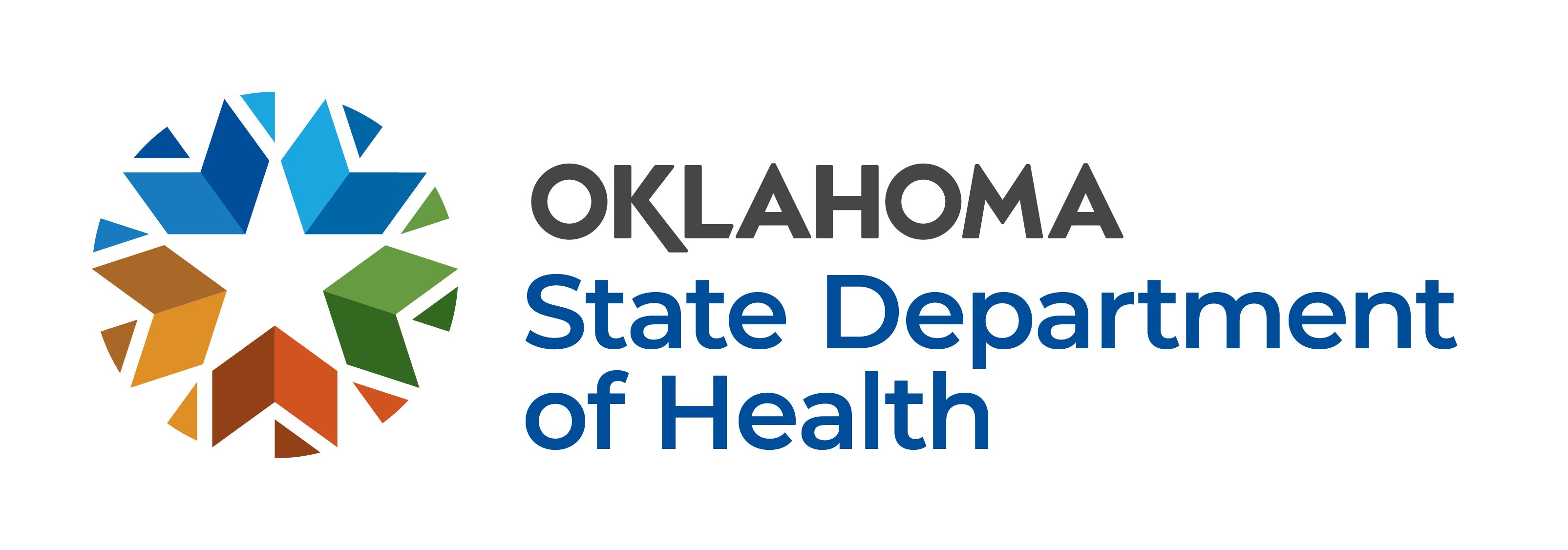Health Care Associated Infections
The Oklahoma State Department of Health’s Health Care Associated Infections (HAI) and Antibiotic Resistance (AR) Prevention Program’s primary objective is to reduce targeted infections that individuals may acquire in health care settings while receiving treatment for medical and surgical conditions.
This will require a combination of:
- Implementing targeted statewide disease surveillance systems in health care facilities and electronic reporting from targeted laboratories.
- Convening a multidisciplinary advisory group to assist the Oklahoma State Department of Health (OSDH) in creating a State Plan to Prevent Health Care Associated Infections and Antibiotic Resistance.
- Training of health care infection preventionists in disease prevention strategies.
- Establishing a prevention collaborative among acute care hospitals.
- Developing and maintaining the HAI/AR Prevention Program infrastructure and capacity to complete the program activities that achieve state goals and supports both the OSDH and program’s missions.
- Assisting local and county public health agencies to investigate unusual infection occurrences and outbreaks in health care facilities.
In accordance with the Centers for Disease Control and Prevention (CDC), the Oklahoma State Department of Health submitted a HAI State Plan in 2015. The Statewide Action Plan for HAI/AR Prevention outlines the timelines and activities of the Epidemiology and Laboratory Capacity Funding HAI Grant.
A “central line” or “central catheter” is a tube that is placed into a patient’s large vein, usually in the neck, chest, arm, or groin. The catheter is often used to draw blood, or give fluids or medications. It may be left in place for several weeks. A bloodstream infection can occur when bacteria or other germs travel down a “central line” and enter the blood. If you develop a catheter-associated bloodstream infection you may become ill with fevers and chills or the skin around the catheter may become sore and red.
FAQ about CLABSI
A “pneumonia” is an infection of the lungs. A “ventilator” is a machine that helps a patient breathe by giving oxygen through a tube. The tube can be placed in a patient’s mouth, nose, or through a hole in the front of the neck. The tube is connected to a ventilator. A “ventilator-associated pneumonia” or “VAP” is a lung infection or pneumonia that develops in a person who is on a ventilator.
FAQ about VAP
Staphylococcus aureus (pronounced staff-ill-oh-KOK-us AW-ree-us), or “Staph” is a very common germ that about 1 out of every 3 people have on their skin or in their nose. This germ does not cause any problems for most people who have it on their skin. But sometimes it can cause serious infections such as skin or wound infections, pneumonia, or infections of the blood.
Antibiotics are given to kill Staph germs when they cause infections. Some Staph are resistant, meaning they cannot be killed by some antibiotics. “Methicillin-resistant Staphylococcus aureus” or “MRSA” is a type of Staph that is resistant to some of the antibiotics that are often used to treat Staph infections.
FAQ about MRSA
The NHSN is a voluntary, secure, Internet-based surveillance system that integrates patient and health care personnel safety surveillance systems managed by the Division of Health Care Quality Promotion (DHQP) at CDC
Oklahoma participates in a national educational campaign to promote appropriate antibiotic use in the community. The campaign, “Get Smart: Know When Antibiotics Work” teaches patients and the general public that antibiotics are precious resources that must be used correctly to preserve their usefulness. Specifically it focuses on clarifying that viruses cause most respiratory infections, and that antibiotics are ineffective against viruses. Information about over-the-counter symptom relief for respiratory infections is included in the educational materials. The goal of this campaign is that patients become comfortable asking their doctors for the best care for their illnesses, rather than asking for antibiotics. Below are links to resources about appropriate antibiotic use.
Resources
- Society of Infectious Disease Pharmacists Long Term Care Antimicrobial Stewardship Certificate Program
- Agency for Health Care Research and Quality Nursing Home Antimicrobial Stewardship Guide
- Enhanced Barrier Precautions OSDH Presentation
- Transmission Based Precautions
- Contact Precautions
- Droplet Precautions and Influenza
- Airborne Precautions
- Hand Hygiene
- Donning and Doffing PPE
- Legionella Lunch and Learn
- Diving into Legionella Case Investigation
- What A Water Management Program Is and Who Needs One
- Internal and External Factors That Can Lead to Legionella Growth
- 7 Key Elements to Building an Effective Water Management Program
- Antimicrobial Resistance: A Global Threat
- Antimicrobial Stewardship: History and Intro to Core Elements
- Antimicrobial Stewardship: Creating a Culture of Antibiotic Awareness
- Antimicrobial Stewardship: Making Moves with Action and Metrics
- Antimicrobial Stewardship in the Long-Term Care Setting


